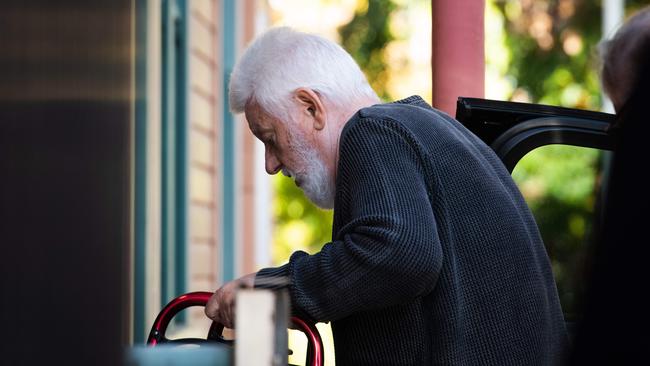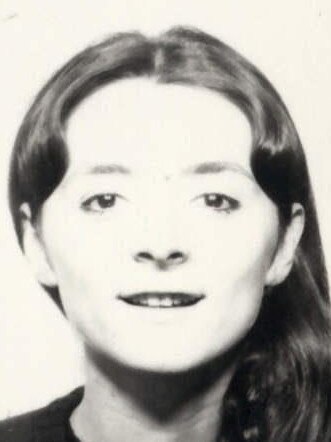Coroner calls in expert: was Marion Barter poisoned?
An inquest into the presumed death of Marion Barter has engaged an expert to review blood tests from shortly before she vanished.

An inquest into the presumed death of Queensland teacher Marion Barter is investigating if she was poisoned, engaging an internationally recognised expert to review blood tests from shortly before she vanished.
Professor Alison Jones, who has worked on crimes including the poisoning of former Russian spy Alexander Litvinenko, was asked on behalf of NSW State Coroner Teresa O’Sullivan to examine if there were signs Barter “ingested toxic substances”.
Professor Jones found no evidence of poisoning in Barter’s test results, but said it could not be ruled out from the information provided.
The review came after serial fraudster Ric Blum’s daughter, Evelyn Reid, told The Australian in February that he spoke to her in horrifying detail about how to use homemade poison to kill people.

Mr Blum, 83, who served jail time in France for fraud and has been known by at least 50 aliases, has become a central figure at the ongoing inquest after admitting to an affair with Barter just before she disappeared in 1997.
He denies harming Barter, and has rejected as lies allegations he scammed other middle-aged and elderly women around the world out of their money and belongings. One victim, Belgian widow Ghislaine Danlois, has said: “I think he wanted to poison me.”
Ms Danlois’s suspicions were based on Mr Blum’s discussions about poisons, and what she says was his aggressive insistence that she undergo a liver ultrasound she believed was unnecessary. Barter underwent a liver function test shortly before vanishing, despite no known serious health issues.

Mr Blum has denied to The Australian he had any interest or knowledge of poisons, other than household products such as bleach.
In documents sighted by The Australian, lawyer Clara Potocki from the NSW crown solicitor’s office asked Professor Jones questions about Barter on behalf of the coroner, with answers provided on April 17 this year.
Professor Jones, a clinical toxicologist, was director of Britain’s National Poisons Information Service and is listed as medical education director at Western Australia’s Fiona Stanley Hospital. In 2006, prior to moving to Australia, she ruled out thallium as the poison used to murder Russian defector Litvinenko in London, before it was discovered he drank tea laced with radioactive polonium-210.
She has helped solve crimes including the case of a UK biochemist poisoning his wife and daughter with atropine, found in the nightshade plant.
Professor Jones said in her response that a QML Pathology report showed Barter underwent blood tests on May 7, 1997, to check glucose levels, hormone levels and liver functioning.
“Note, although liver tests in blood are routinely called liver function tests, they are not really tests of liver function, more so of liver injury,” Professor Jones said.
She added that she had not been provided clinical details or medical records for Barter, who was 51 when she went missing.

“Working solely on the information provided in the letter of instruction, I imagine that these were routine clinical tests requested by a general practitioner in a woman of perimenopausal age,” she stated.
The glucose check was an initial screen for type 2 diabetes, common in people of middle age. Barter’s glucose levels were normal, Professor Jones said.
The female hormone screen might have been to ascertain if hormone replacement therapy should be considered for unpleasant menopausal symptoms. Barter’s hormone levels were suggestive of perimenopause, Professor Jones said.
Liver function tests screened for fatty liver and excess alcohol consumption, also common in the middle aged. Barter’s results were within the normal range.
Ms Potocki asked: “Do any of these results indicate whether Marion Barter had ingested any toxic substances? Please explain whether the tests undertaken are capable of demonstrating whether any toxic substances had been ingested.”
Professor Jones replied: “There are no clinical toxicology test results here, i.e. no toxin assays. The routine blood tests, glucose and liver function tests and female hormone levels in Ms Barter’s blood are not abnormal and not suggesting of poisoning having taken place. They cannot, however, exclude this possibility.”
In some toxic exposures, such as massive paracetamol overdose, liver function tests may be abnormal within days, she added.
Mr Blum’s daughter, Ms Reid, said she became so scared of him that when he gave her a bottle of Bollinger, she took it to a Melbourne police station suspecting he was trying to poison her.
“He disclosed a method (of poisoning) to me and it’s like a tattoo – I’ve been scarred with it for all my life,” she said, speaking publicly about her biological father for the first time.
She also told of her suspicions about the premature death of her mother, Mr Blum’s third wife, Ilona Reid, who was found slumped over the steering wheel of her car on Chapel St in Melbourne’s St Kilda in 1977.

Coronial records state her mother, 31, died of heart failure. Ms Reid was seven years old at the time, and her grandmother and uncle also died in quick succession in the same period.
Barter secretly changed her name to Florabella Remakel before she disappeared, adopting the surname of one of Mr Blum’s aliases.
On returning to Australia in August 1997 after an overseas trip, she wrote on her incoming passenger card that she was a married housewife living in Luxembourg and that she was only back temporarily to visit family and friends. Mr Blum returned to Australia from an overseas trip several days earlier, travel records show.
One possible explanation for Barter’s tests is that people wishing to get married in Luxembourg at the time had to undergo blood tests and a general medical examination.
The investigation and inquest are being handled by NSW because Barter, or someone posing as her, withdrew large sums of money from a bank in Byron Bay and used her Medicare card for an optometrist’s appointment in Grafton before she went missing.






